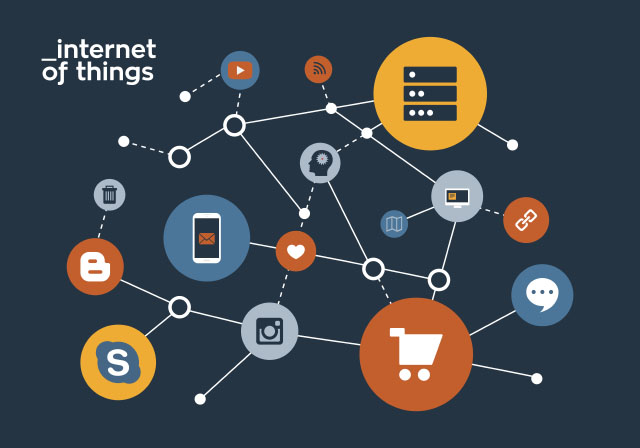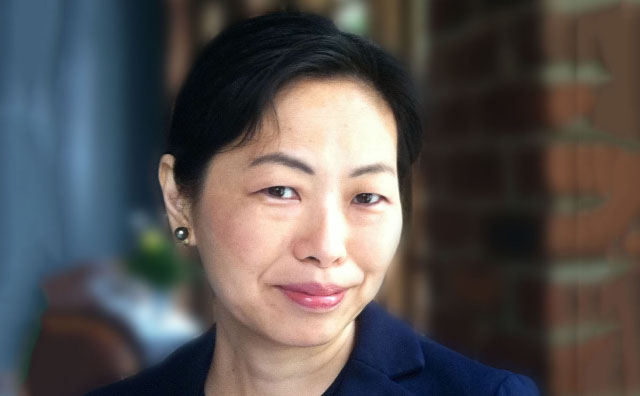At Goodyear, this alumna is driving disruptive technology development
Christine Nakatani has found success because she has never been afraid to fail.
Early in her career, Nakatani, A.B. ’89, Ph.D. ’97, crafted product strategy for an iconoclastic Silicon Valley startup creating a speech-to-speech artificial intelligence translation system for hospitals. The concept was for an easy-to-use platform for English-speaking doctors to present crucial medical information to Spanish-speaking patients.
But breaking into the hospital market before mobile computing presented usability barriers too steep for the tiny firm to climb, and the too-early startup faltered.
“When trying to get new technology to market, you will fail more often than succeed,” she said. “In Silicon Valley, I learned not to take market failure as a sign of technical failure or lack of vision.”
Fast forward a few years and Nakatani is now sharing that wisdom with the next generation of technologists, shepherding internal ventures from ideation to market as head of software product and platform at The Goodyear Tire & Rubber Company’s Global Innovation Center.

Last fall, the Fortune 200 company’s accelerator launched an Internet of Things (IoT) business driven by sensors that monitor the performance of commercial truck tires. Sensor data helps trucking company owners increase fuel efficiency, prevent roadside breakdowns, identify the best routes, and even develop better driver training practices.
That’s not to say bringing a Silicon Valley mindset to a traditional company has been without obstacles.
“There are intense cultural challenges working for a company with a 100-year R&D legacy,” she said. “But I’m proud to work with Goodyear’s innovators to scale this initiative. I’ve realized that incubator work is where I belong.”
Nakatani didn’t set out to do startup work. Arriving at Harvard in 1985 when the University’s computer science curriculum was just taking shape, she was fascinated by computation as a transformative method of scientific inquiry in a host of fields.
Her first research job running psychology experiments on human cognition sparked her interest in the nascent field of artificial intelligence (AI). Taken by AI’s comparatively rapid simulation approach to examining deep quandaries of the human mind, she earned a joint A.B. in computer science and philosophy, learning how to build AI systems as well as to read, write, and think deeply about fundamental concepts of perception and reasoning.
Her undergraduate advisor, AI pioneer Barbara Grosz, Higgins Professor of Natural Sciences at the John A. Paulson School of Engineering and Applied Sciences (SEAS), helped Nakatani land a summer research job at Bell Labs, which she drew upon when she returned to Cambridge a few years later for her doctorate (again with Grosz as her advisor).
“Working at Bell Labs during and after my Ph.D., I was fortunate to ride along with the first wave of scholars who brought Professor Grosz’ field of computational dialogue modeling to spoken conversation,” she said. “That work planted the seed in me to not just pursue theoretical research, but also make systems of practical value.”

Interested in the disruptive potential of conversational agents, she took a career leap from Bell Labs to Silicon Valley’s fast-paced startup ecosystem. She settled in as founding product manager of Nuance Vocalizer text-to-speech synthesis, pioneering early machine voice technology that was later licensed by Apple and unveiled as the voice of Siri in 2011.
“It took 10 years from its first launch to its worldwide recognition, but the fact that our product made it that far to such a huge audience is a mission fulfilled,” she said.
Nakatani changed gears as mobile and IoT disruption hit, eventually leading product for Washington, D.C.-based Wireless Registry, where she launched a global opt-out registry for mobile devices. This registry brought to life a self-regulatory system crafted by Sen. Charles Schumer (D-N.Y.) with a think tank at the vanguard of U.S. digital privacy policy.
That experience reinforced to her that policy, like technology, must respect the needs of humans.
Nakatani brought that human-centered mindset to Goodyear in 2015, where she has found the perfect marriage of her passions—she now plays the part of professor, startup guru, and technology soothsayer.
Always looking forward, she expects cultural shifts to radically change decades-old transportation habits. Customers are increasingly seeking on-demand services and don’t want to make a major investment in transportation. Young adults are even forgoing driver’s licenses in favor of services like Uber and Lyft.
“We are going to expect performance, safety, and reliability from what will ultimately become our transportation robots,” she said. “Goodyear has a piece of that—where the rubber literally meets the road.”
Today, Nakatani plays the role of coach, training young engineers to innovate. In a way, she feels she is paying forward the investment made in her by her Harvard professors and mentors, who inspired her to ask questions and chase her dreams no matter what obstacles she encountered.
“You have to be true to your heart,” she said. “Don’t focus too much on what the sexiest job title is or where the next big IPO is coming from. Look at what motivates you and find meaning.”
